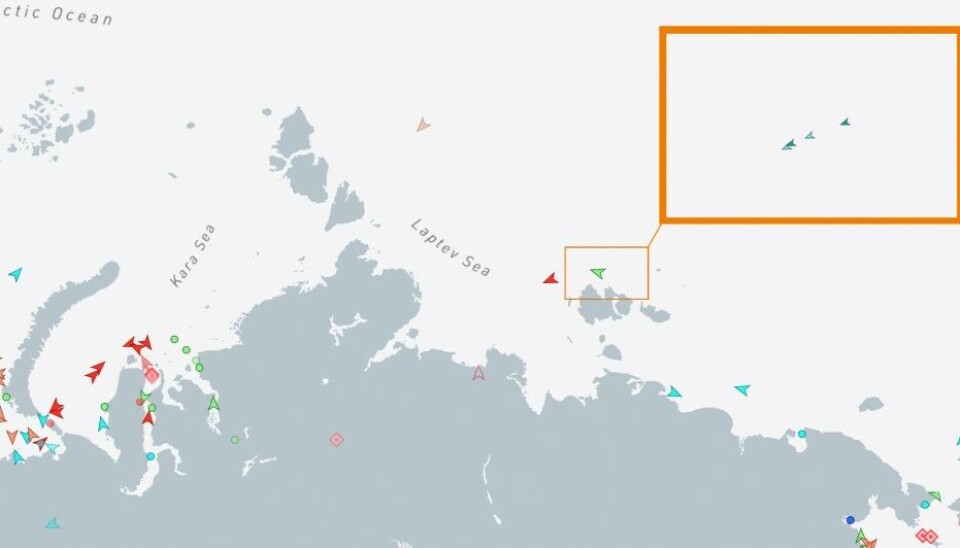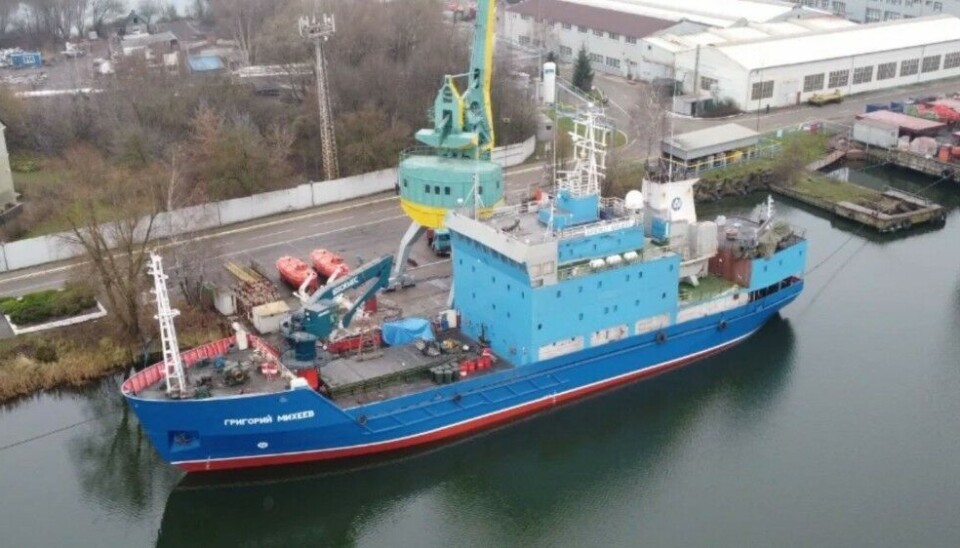
The last convoy before the big freeze
Research ship Grigory Mikheev has spent weeks in remote Arctic waters to prepare the ground for year-round shipping on the Northern Sea Route. Now it is escorted out of the quickly expanding sea-ice as part of this year's last ship convoy
The research ship that is owned and operated by the Hydrographical Corporation, a subsidiary unit of state nuclear power company Rosatom, is part of a convoy of four ships that now sails westwards on the remote Arctic route.

In addition to the Grigory Mikheev, the convoy includes cargo ships Mys Dezhnev, Pola Dudinka and nuclear-powered icebreaker Arktika.
It is the last convoy of this year’s season, Rosatom informs.
A few kilometers further west is sailing LNG carrier Boris Davydov.
Meanwhile, container carrier Newnew Polar Bear, that for several days was grouping with several of the other ships, was on the 13th of November about to exit Arctic waters and make it southwards into the Pacific. The vessel is suspected of involvement in sabotage in the Baltic Sea and is wanted by Finnish and Swedish authorities.
A white, thick sheet is about to cover the vast region and the ships that do not make it out in time risk being stuck in the sea-ice until melting starts early next summer.
But the icy waters might ultimately become more accessible for shipments also in wintertime. Russia is pushing for the development of the Northern Sea Route to a year-round shipping route and is building infrastructure and icebreakers that can facilitate icy sailing.
The Grigory Mikheev is a key part of the push.

The more than 30 year old vessel recently underwent a major upgrade that allows it to conduct research operations in the remotest parts of the Arctic route. For several weeks this fall, it was operating in the port of Tiksi, where water depths were measured and navigational equipment installed, local media informs.
The vessel subsequently moved on to Pevek to conduct similar operations.
The Hydrographical Corporation owns four vessels that all are designed for Arctic research. All of them are in the process of major upgrades and will enable the company to design maps, install navigational equipment and develop seaports along the Russian Arctic coast.
According to the corporation, up to 35 billion rubles of Russian state budget money is to be spent on seaport development in the area over the next three years.
The lion’s share of the funds will be spent on five projects, company leader Aleksandr Bengert explains.
On the priority list are the terminal of Utrenneye, a ship canal and seaport for coal project Syradasayskoye, the Sever Bay oil terminal and a new goods terminal on Cape Nagleyny near Pevek.
The funds come in addition to major sums spent over the last few years. According to Bengert, almost 100 billion rubles was spent by the Hydrographical Corporation alone in the Utrenneye port in the period 2020-2022. The Utrenneye will serve Novatek’s Arctic LNG 2 project.
Dredging constitutes a key part of operations. According to the company, more than 24 million tons of seabed has over the past three years been removed from the Gulf of Ob only in connection with the Utrenneye port project.















